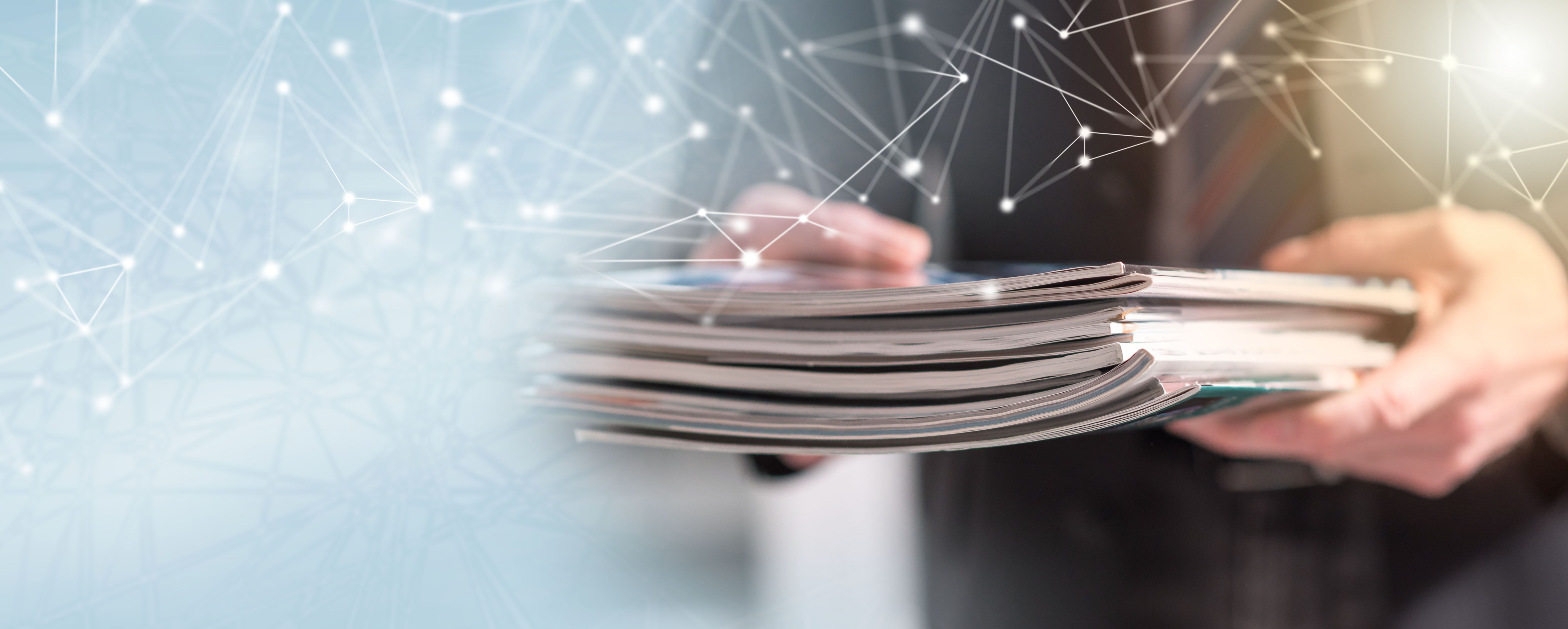Publication
Article
Psychiatric Times
FDA Approves Reduced Clozapine Monitoring; Increased Patient Access Versus Increased Risk
Reducing the mandatory weekly monitoring of white blood cell (WBC) count during clozapine (Clozaril) treatment to a biweekly schedule after six months of treatment could result in twice the incidence of agranulocytosis and one death annually from blood dyscrasia in the approximately 67,000 patients using clozapine, according to testimony by Clozaril manufacturer, Novartis.
Reducing the mandatory weekly monitoring of white blood cell (WBC) count during clozapine (Clozaril) treatment to a biweekly schedule after six months of treatment could result in twice the incidence of agranulocytosis and one death annually from blood dyscrasia in the approximately 67,000 patients using clozapine, according to testimony by Clozaril manufacturer, Novartis.
The reduced frequency of WBC monitoring of clozapine was recently approved by the U.S. Food and Drug Administration and announced in March (PT April 1998) following recommendations from the July 1997 meeting of the agency's Psychopharmacologic Drugs Advisory Committee.
Several people spoke in favor of reducing the frequency of monitoring during the advisory committee meeting, citing convenience and cost-savings. Among them was Carol Fitch, representing the National Alliance for the Mentally Ill, which favors the reduction.
"As many of you know," Fitch told the committee, "the blood draw has become very difficult for many people. Particularly after more than a year, the blood vessels collapse and the incentive to continue on this very fine medication dissipates as the difficulties of a blood draw continue."
Thomas Laughren, M.D., of the FDA, stated, "One would expect that as you make the system more convenient and less painful to the patients, they would be more willing to take the medication. Similarly," he went on, "you would expect that as you reduce the costs associated with monitoring and the complexity of the delivery system, the patients may have greater access. This is the message that we have overwhelmingly heard over the eight years that Clozaril has been marketed."
Although Novartis petitioned the FDA to reconsider Clozaril monitoring, the agency's decision also applies to the generic clozapine product manufactured by Zenith Goldline. The reduced frequency of WBC determinations has, therefore, been incorporated into the national monitoring program maintained by Zenith (ALERT: Archives Lessening the Elemental Risk of Treatment) as well the Clozaril National Registry (CNR) originally established by Sandoz and continued under Novartis ownership.
It was the extensive data accumulated in the CNR that enabled the committee to consider the specific levels of risk for developing agranulocytosis associated with different WBC monitoring schedules. Committee consultant Carol Tamminga, M.D., University of Maryland, remarked, "Although one can always say that there [are] not enough data here, it seems to me that the Clozaril National Registry certainly provides a substantial amount of risk data of the kind of quality that we don't usually get...where we have numbers over time, divided by age, divided by sex to really look at in order to understand risk."
While Novartis sought FDA approval of less frequent WBC monitoring to increase the cost effectiveness, accessibility and patient acceptance of Clozaril, the manufacturer's spokespersons and the consultants presenting their data were forthcoming in testimony to the advisory committee about the substantial risk associated with clozapine treatment and the increased risk that would accompany less frequent WBC monitoring.
From the inception of the national registry when Clozaril was first marketed in the United States in February 1990 through the April 1995 cut-off date for the study supporting this petition, there have been 406 cases of agranulocytosis in approximately 160,000 person-years of clozapine usage.
In the highest period of risk, occurring within the first several months of treatment, there were approximately 30 episodes of agranulocytosis per 1,000 patient-years of drug use. The overall risk within the first six months of treatment was approximately 8.6 episodes per 1,000 patient-years. That risk appeared to decline beginning at six months and continued to do so throughout the assessment period. While there was some increased incidence with increased patients' age, that difference in patients taking the drug over six months was described in the Novartis presentation as "small."
Despite a declining rate of agranulocytosis after six months of treatment, Ravi Anand, M.D., executive director of the central nervous system department at Novartis, emphasized to the committee, "there is no 'magic wall' at six months that defines a turning point in safety. The data from the U.S. database of approximately 67,000 patients indicate that after six months of therapy, 581 cases of moderate leukopenia, 67 of severe leukopenia and 66 cases of [agranulocytosis] were reported. These data [including treatment periods exceeding two years]...clearly indicate that as long as you are continuing treatment with Clozaril, there will be a risk for hematologic adverse events and therefore implies the need for monitoring."
A 45.2% rate of agranulocytosis among patients whose WBC drop was too rapid to be detected in weekly monitoring was markedly higher than the 6.7% developing agranulocytosis among patients with gradually decreasing WBC who were able to discontinue clozapine at a moderate stage of leukopenia. Given the relative protection from agranulocytosis when clozapine is discontinued before moderate leukopenia worsens, the principle question posed by the advisory committee was: How many additional patients would deteriorate to severe leukopenia and marked risk of agranulocytosis with less-than-weekly WBC monitoring?
That estimation, based on statistical projections of the WBC decrement rate observed in the CNR patients, and assuming WBC monitoring every other week after six months of treatment, was presented to the committee by Noel Weiss, M.D., professor of epidemiology at the University of Washington. He cautioned the committee to regard the projections as such, rather than firm numbers, since there are no direct data for clozapine treatment with less than weekly WBC monitoring. "In the United States, the policy has been for weekly monitoring and we don't have any experience in the presence of less than weekly monitoring, so we have to make educated guesses," Weiss said. "These assumptions that we've made are not going to be 100% accurate, and therefore, these projections are not 100% accurate."
While 95% to 96% of the patients with gradual WBC decline were identified by weekly monitoring before moderate leukopenia progressed, Weiss related that in the Novartis estimates, only 73% would have been so detected with biweekly monitoring. At the observed rate of agranulocytosis developing in 6.7% of patients with gradual declines in WBC, Weiss projected that approximately 28 of the 424 patients in this group would have developed agranulocytosis with biweekly monitoring.
In addition to the 14 of 31 patients (45.2%) who developed agranulocytosis when weekly monitoring did not catch their rapid WBC drop before it became severe, Weiss projected there would be another 57 patients, to a total of 71, who would develop agranulocytosis when their WBC count drops acutely in the interval between biweekly monitoring. In addition, he noted, some patients would not benefit from either monitoring schedule because they develop agranulocytosis without first presenting with leukopenia.
From the database of approximately 160,000 person-years use of clozapine and the statistical projections, Weiss summarized, "The rates of agranulocytosis that are observed to occur under weekly monitoring...0.5 per 1,000 patient-years...under biweekly monitoring, the rate is almost double and the rates would continue to be higher, we estimate, [in patients] not caught at moderate leukopenia."
In considering the related mortality, Weiss explained, "As monitoring becomes less frequent, those cases of agranulocytosis that do occur will be identified relatively later in their natural history and could easily be associated with a poorer outcome and a higher case fatality rate." Given the approximate 3% mortality associated with agranulocytosis, Weiss indicated, "If this monitoring strategy were adopted biweekly at six months, our projections are that about one death in the current Clozaril user population would occur per year."
Committee member Stephen Marder, M.D., West Los Angeles Veterans Administration Medical Center, posed the question of whether other methods of clinical monitoring for agranulocytosis could be employed to lower the mortality risk with the less frequent WBC determinations. To this, Stanton Gerson, M.D., professor of medicine and chief of the division of hematology and oncology at Case Western Reserve University, responded from the reported experience with the serotonin inhibitor mianserin (not available in the United States), that had produced a 15% rate of agranulocytosis in the absence of WBC monitoring before being withdrawn from clinical trials. He offered little hope that clinical observation without a WBC count would discern symptoms prior to a condition becoming critical.
"It's very clear in a variety of other settings that patients who present with symptoms related to agranulocytosis have a higher morbidity as well as mortality than those who present simply with a neutropenia in the absence of symptoms," Gerson explained. He noted, also, that while there are little data to distinguish the presentations of drug-induced agranulocytosis from a nondrug-related occurrence, the emergence of febrile neutropenia with chemotherapy supports the association of this symptom with drug-induced agranulocytosis.
"it's fair to say...thinking back now to the earlier data with Clozaril, that if one presented with febrile neutropenia, there was a much higher mortality rate than if one presented simply with neutropenia," Gerson said. "That mortality rate was really quite high, I think in excess of 40%."
Committee chairperson, John Kane, M.D., Hillside Hospital, New York, questioned whether there is a lower likelihood of death with agranulocytosis that occurs after the initial six months of clozapine treatment than with earlier emergence. Gerson responded that, although the relatively few number of deaths in the studied population precludes that analysis, their presentations appear to be similar.
"Once a drug is stopped, the recovery period seems to be independent of the duration of prior treatment," Gerson said, adding, "so I don't think that there's a reason to believe that the effect on the marrow, when at presentation of agranulocytosis, leads to any difference in comorbidity or time to recovery. I think one has to consider them to be, really, quite identical, early and late cases."
Kane pointed out that while the available data spanned 1990 to 1995, the committee and the FDA were tasked with making a decision that affects the present and future. In that regard, he asked Gerson whether the clinical management of agranulocytosis may have improved since the study period to lower the mortality rates from those in the past.
Gerson acknowledged the recent practice of administering marrow "growth factors"--controversy over their efficacy notwithstanding--and the availability of "third generation, fourth generation" antibiotics, as well as improved neutropenic precaution procedures in hospitals. This clinical management has prevented the mortality rate from exceeding the 3% encountered in the study period, according to Gerson. "It's really very hard to find studies with less than 3% incidence of death associated with neutropenia or febrile neutropenia," Gerson said. "That's a very low number."
Paul Leber, M.D., director of the FDA Division of Neuropharmacological Drug Products, addressed the committee after the members had discussed the implications of the Novartis testimony and data. "There are obviously always going to be some patients who will be missed no matter what the monitoring is," he told them. "[We] have to decide, as a committee, that we will probably increase the risk at which this adverse event occurs. Can we as a society tolerate that?"
Ultimately deciding that the benefit outweighed the risk, the advisory committee recommended not only the reduction to the biweekly monitoring after six months that the FDA subsequently approved, but also suggested it would be appropriate in the future to consider making WBC monitoring voluntary after some initial period of mandatory screening.




